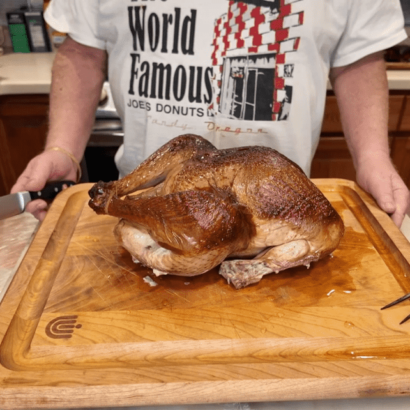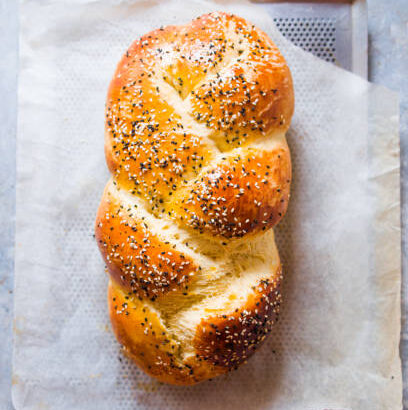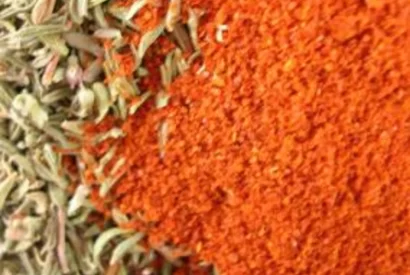
I love the Thanksgiving tradition, but I am not a fan of turkey. So, I gave myself a challenge and set out on trying to make a palatable Thanksgiving turkey. My first challenge was to define where I wanted my smoked turkey recipe to take the bird, then pull from my knowledge, experience, and techniques to be successful. The primary question, what did I not like about the turkey(s) I have made and been served? The flesh itself, for me, is kind of unremarkable in flavor. DRY, every bird I ever cooked or been served ‘needed’ gravy. A happy Chef B at Thanksgiving dinner is a plate of dressing/stuffing and a mighty tasty gravy. I will not address the debate over Mashed Potatoes vs Dressing for the holiday.
Turkey by nature is dry, it doesn’t have the fat content that you find in other poultries (ex. chicken or duck). When I was young (black and white TV days) a turkey producer came up with the marketing line that their birds were ‘deep basted’. I learned what this meant when I was deboning a whole turkey to make a turkey galantine, stuffed with a mushroom pate (yes, this journey of making a tasty bird took make exhaustive and creative turns). The turkey producer(s) while processing the birds, actually injected a yellow hydrogenated fat deep into the breasts of the birds. This type of fat has a very high melting temperature. So, if you would cook the bird to an internal temperature of 170 (in the breasts) this fat would not melt away but just be hanging out where it was injected. Long answer to a simple statement… turkey are dry.
Turkeys are tasteless. If they weren’t, wouldn’t see them in the grocer’s fridges year round? Sure, we all love a deli turkey sandwich; but that is a manufacture product and does not resemble what mom put on the holiday table. But, there is a hidden lesson to be learned from deli turkeys. How do they get the deli turkey so moist?
Let’s return to the assignment at hand. Get this bird full of flavor and moisture. My solution is to brine the turkey. But the skin, Chef!!! True, brining does make the skin leathery, but on the other hand, in my humble opinion, for my holiday table (and hopefully yours) the trade off of moist juicy, in your face flavored turkey for a modicum of crispy skin… the juicy turkey option always wins.
The recipe that follows is my Thanksgiving holiday traditional Turkey. Hopefully, it will become yours.
Transform Your Thanksgiving with This Smoked Brined Turkey Recipe
Thanksgiving turkey has a reputation: it’s often the star of the holiday meal but can also be dry and underwhelming. If you’ve ever thought, “Why does turkey always need gravy to taste good?”, this Smoked Brined Turkey recipe is here to change your mind. By combining a flavorful brine with the art of smoking, this method results in a juicy, tender, and irresistibly smoky turkey that your guests will rave about.

Why Brining and Smoking?
The secret to a turkey that’s moist and packed with flavor lies in brining. Traditional turkeys often come out dry because they lack the natural fat content found in other poultry. Brining solves this by infusing the meat with moisture and seasoning. But what about the flavor? Smoking takes this to the next level by adding rich, wood-fired depth to the bird.
While some might worry that brining makes the skin less crispy, the trade-off for tender, juicy meat is well worth it. Plus, with a few tips, you can still achieve a golden, flavorful crust that complements the smoky interior.
What Makes This Smoked Brined Turkey Special?
This recipe is not your average turkey preparation. It combines:
- A flavorful brine that includes maple extract, brown sugar, and warming spices like nutmeg and allspice.
- Slow-smoking techniques that lock in moisture and add layers of flavor using woods like pecan, cherry, or sugar maple.
- A simple process that ensures even first-timers can achieve professional-level results.
Jump to Recipe
Step-by-Step Guide to the Perfect Smoked Turkey
1. Brining: Infusing Moisture and Flavor

The brine is where the magic begins. By dissolving a mix of salt, sugars, and spices in water, you create the perfect bath for your turkey to soak up flavor. The brining process takes two days, so plan ahead to allow the turkey ample time to absorb all the goodness.
2. Smoking: Low and Slow for Perfection

Smoking the turkey at a steady 225–250°F creates that signature smokiness while keeping the meat tender. Using a digital thermometer ensures you hit the perfect internal temperature of 170°F in the thigh without overcooking.
3. Resting: Locking in the Juices

Once smoked, letting the turkey rest is essential. Covering it with foil and a clean towel allows the juices to redistribute, ensuring every slice is succulent.
Tips for Success
- Choose the Right Wood: Pecan and cherry create a balanced, slightly sweet smoke that complements the turkey’s savory flavor.
- Mind the Temperature: Keep your smoker temperature steady for even cooking.
- Customize Your Brine: Add fresh herbs like rosemary or thyme for an aromatic twist.
What to Serve with Smoked Turkey
This smoked turkey pairs beautifully with classic Thanksgiving sides like creamy mashed potatoes, stuffing, and cranberry sauce. For a modern twist, consider serving it with roasted vegetables or a fresh green salad with citrus dressing.

Smoked Turkey, brined
Equipment
- Smoker: For slow-cooking with wood or pellets.
- Brining Container: A large food-safe bucket or container to fully submerge the turkey.
- Digital Meat Thermometer: Ensures precise cooking to 170°F in the thigh.
- Tongs and Paper Towels: For handling and drying the turkey after brining.
- Foil and Clean Towel: To rest the turkey after cooking.
Ingredients
- 16-20 lb turkey cleaned and rinsed,
- 2 gal Water
- 10 oz sugar
- 12 oz Morton’s pickling salt You can use any salt you want. I choose pickling salt because it disolves easily.
- ½ lb brown sugar
- ½ tbsp cloves ground
- 1½ tbsp allspice ground
- 1½ tbsp nutmeg ground
- 2 bottles maple flavor extract
- 2 tbsp coarsely cracked black pepper
Instructions
Curing
- Place hot water in a 16 to 20 quart container. Depending on the size of your bird
- Dissolve the remaining ingredients by stirring vigorously for a while.
- Submerge the bird into the bucket of brine.

- Cover with a piece of plastic and place in fridge (or if weather permitting, in a cold place, garage or back deck, for 2 days.
- Check on the bird daily.
Smoking
- Remove the bird from the brine and rinse it thoroughly under cold running water.
- Pat the turkey inside and out with paper toweling.
- Leave the bird at room temperate for 2 to 3 hours.
- Build a low slow fire with hardwood or pellets. Aim for a 225 to 250 temperature.
- Insert a digital meat thermometer in the deepest part of the thigh.
- Smoke the bird for as long as you can.
- The internal temperature should be 170 degrees.
- For a 225-250 degree fire it should take about 4–5 hours (depending on size of bird)
Notes
Nutrition
Frequently Asked Questions
Q: Can I brine the turkey for longer than two days?
A: Two days is optimal for this recipe, but you can extend the brining time to three days for even more flavor. Just make sure the turkey stays cold and fully submerged.
Q: What if I don’t have a smoker?
A: You can replicate the smoky flavor by using a grill with a smoker box or by roasting the turkey in the oven with liquid smoke added to the brine.
Q: How do I ensure crispy skin?
A: Pat the turkey completely dry after brining and consider increasing the smoker temperature to 300°F for the last 30 minutes.
Why This Recipe Will Become Your Go-To
This Smoked Brined Turkey recipe is more than just a meal—it’s a showstopper that transforms Thanksgiving dinner into an unforgettable experience. Whether you’re hosting for family or friends, this recipe guarantees juicy, flavorful turkey every time.
The combination of brining and smoking isn’t just for the holidays, either. Once you master this method, you’ll find yourself wanting to make smoked turkey year-round for sandwiches, salads, and meal prep.
Make your Thanksgiving one to remember with this Smoked Turkey Recipe. Follow the recipe, trust the process, and watch as your guests go back for seconds (and maybe thirds). Don’t forget to share your success stories and tag us in your turkey pics!

Hi, I’m Chef B! Passionate about all things culinary, I’ve spent years perfecting my recipes to bring bold flavors to your kitchen. Let’s cook up something delicious together!





